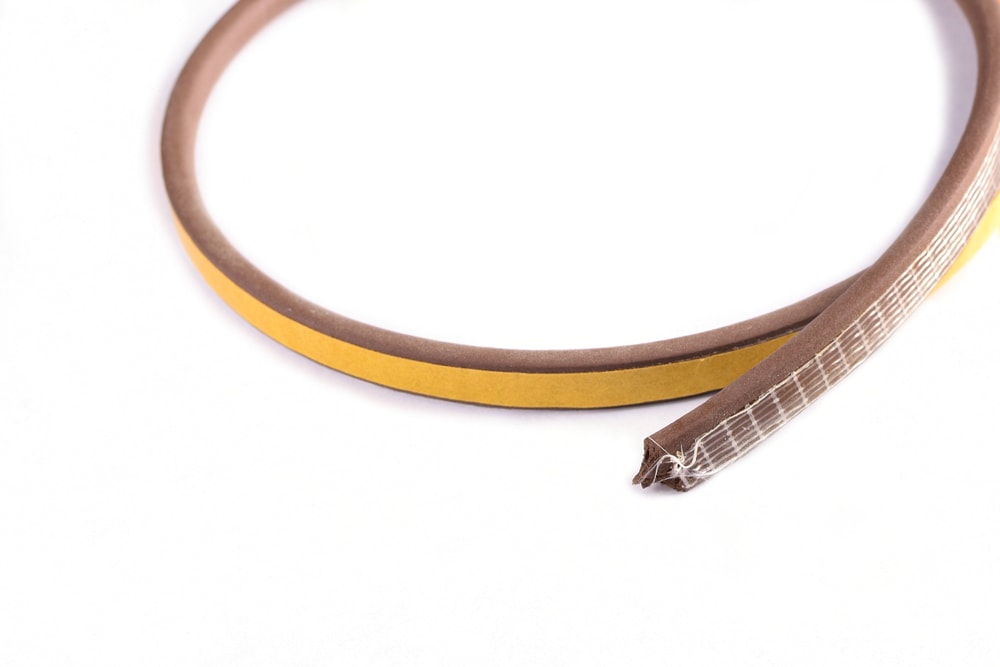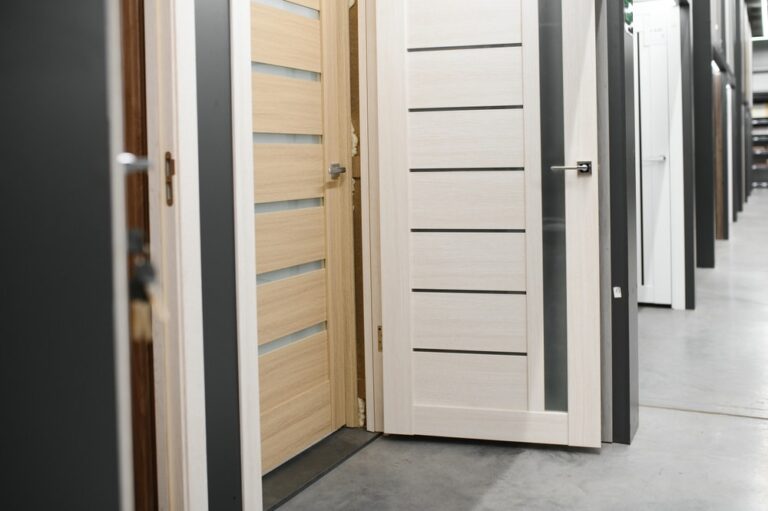Are you experiencing drafts and higher energy bills? You may want to check your door weatherstripping, as this material may be worn and in need of replacement. Sealing exterior doors is vital for keeping your interior comfortable, quiet, and energy efficient.
Pinnacle Home Improvements is dedicated to providing energy-efficient home improvement solutions that enhance your home. In this blog, we explain the variety of weatherstripping exterior door options and door insulation techniques, helping you to learn how to insulate a front door for winter and avoid wind drafts as well as keep your interior energy efficient throughout the year.
Why Weatherstripping Is Needed for Outer Doors
Without weather stripping, you won’t get a tight seal around your door. This leads to air leaks, which can cause your energy bills to skyrocket and make it harder for you to get to a comfortable interior temperature. Protection from extreme temperatures through weather stripping around doors, window sashes, and attic hatches provides great benefits for your home, including:
Improved Energy Efficiency
When you block drafts and air leaks, you improve your home’s energy efficiency. Those small spaces can cause significant impacts on your energy consumption. When cold air sneaks in during the winter, you’ll have to run your heater for longer. In the summer, heat from outside can make it difficult for your cooling system to keep up, causing you to spend more on your electric bills.
Maximized Comfort
With weather stripping, you can stay comfortable no matter what extreme weather conditions are happening outside. Whether you have a blizzard with plummeting temperatures or record-breaking heat, weather stripping keeps drafty air from outside from entering your home and locks in heated or cooled air inside the interior, allowing you to stay comfortable in every season.
Less Wear and Tear on HVAC System
Reducing drafts from entering your home with weather stripping also means that your HVAC system doesn’t have to overcompensate to catch up to your thermostat settings. You’ll prolong its lifespan and prevent costly breakdowns by adding simple weatherstripping materials.
5 Types of Exterior Door Weatherstripping
The best weatherstripping materials to use are outer doors are:
Adhesive-Backed Foam Tape
Weather stripping made from foam tape slightly compresses, which allows it to form a good seal. There are closed-cell foam or open-cell foam options that you can add to the areas around your door jamb. Foam weatherstripping may need stapling into the door frame though it’s simple to install, affordable, and can help you quickly protect your home from drafts.
Tubular Rubber, Vinyl, or Silicone Weatherstripping
Tubular weatherstripping can be made from EPDM rubber, vinyl tubing, or silicone. It’s designed to surround the entire door frame, including around the hinges. This weatherstripping is excellent in sealing against air, though it’s more expensive, and professional installation is recommended to ensure it’s done right.
Interlocking Metal Weatherstripping Channels
Weatherstripping made from metal uses metal strips that interlock when the door is closed. One metal strip has a channel with a carved shape, while the other has a piece made from aluminum that protrudes, allowing it to fit right into that carved-out space. Since aluminum is a sturdy material, it’s one of the best weatherstripping types out there. However, it comes at a higher upfront cost, plus it needs to be installed by a professional.
Door Sweeps
Door sweeps are weatherstripping components that help you seal the bottom of your door. It usually features an aluminum strip with a sweep attached, made from vinyl, felt, or flexible plastic.
Door sweeps may need trimming to help keep them from catching on any rugs or carpeting by your door, though it’s an excellent weatherstripping addition that you should have to keep drafts from coming in underneath the door. You will need other weatherstripping in addition to a door sweep to go around the door jamb, too, though this solves the problem of air getting in from the bottom.
Tension Seal Weather Stripping
Tension seal weatherstripping is a common option, also called a V-Strip, since it’s usually made out of vinyl. With this weatherstripping, you can seal the top and sides of your door, and it looks virtually invisible as it goes inside the door frame. It peels and sticks on one side, creating an excellent seal to keep air and water out of your home.
This weatherstripping is long-lasting, effective, and affordable, though it can be a challenge when handling corner seals. You may want help from a professional to get this weatherstripping installed.
How to Choose the Best Weather Stripping for Your Doors
Since you have many options with weatherstripping, you’re likely wondering how to choose new weatherstripping. It helps to look at a few factors to pick the right type for your home:
Climate
One of the most important factors in choosing weatherstripping is considering your local climate. If you live in a hot climate with intense humidity and frequent rain, you’ll want weatherstripping that’s more suited for keeping out moisture. If it’s cold where you live, you’ll want to keep that chilly air outside to enhance your home’s comfort.
Appearance
While you want your weatherstripping to be durable and form a strong seal from the outdoors, you might be concerned that it will detract from the appearance of your home. Choosing weatherstripping that’s less visible is a more ideal option if you don’t want it to stand out.
Durability and Frequency of Use
You might be able to get away with temporary or cheaper weatherstripping options on doors you don’t use as often. However, for main entry doors, you will want durable weatherstripping made from stronger materials like tubular rubber that will hold up to frequent use.
Price
The cost of weatherstripping is certainly something you’ll be thinking about when planning your budget. It may be tempting to get the cheapest option, though you may want to think about how soon you’ll need to replace it. In the end, it might be more budget-friendly to spend more upfront to get greater long-term effectiveness rather than needing to install weatherstripping every year.
Installation Factors
Some weatherstripping can easily be installed by anyone, regardless of their DIY skills. However, to ensure a proper seal, it may be best to have a professional provide installation. It will depend on the materials you choose, the tools you have, and your level of comfort in taking on the installation yourself.
Step-by-Step Guide for Weatherstripping Doors
If you do decide to take on the installation of weatherstripping yourself, here are the steps to follow:
Clean the Surface Area
Start by cleaning the area around the door where you will install the weatherstripping. You’ll want to remove dirt and grime, then completely dry it. Make sure you also remove any old adhesive from the door and threshold area before beginning the next steps.
Measure
Next, you will need to carefully measure the length of the gaps that need to be sealed. It helps to take the measurements two or even three times to ensure accuracy before cutting the material. Remember, weatherstripping requires a snug fit to be effective in keeping drafts out of your home.
Test It First
Before you start to secure the weatherstripping in place, conduct a test fit first without removing the adhesive or stapling it in place. This will help you see that you’ve got the right length and proper placement.
Installing Weatherstripping
To get weatherstripping properly installed, you must follow the instructions for the style of weatherstripping you’ve selected for the job. If it features an adhesive backing, you’ll simply peel it and stick it into place. If you need to nail or staple it, put them every few inches to ensure it stays secure.
Check Your Work
Once installed, you should open and close your door a few times to see if it operates smoothly and that you’ve created a proper seal. When done right, you can admire your handiwork and enjoy the benefits of weatherstripping around your door.
Common Mistakes and How to Avoid Them
When you install weatherstripping, you may face a couple of problems. Here are the most common mistakes made with weatherstripping and how to get things back on track:
Gaps and Drafts
When installed right, you will no longer have gaps or drafts. However, you may run into issues if you still have these issues after you’ve put the new material in place. First, start by checking that there’s proper compression when the door is closed. If that seems to be working fine, you may not have cut the weatherstripping to the right size to fill your gap.
Check for missed areas, as those are a common culprit. You can then add additional sealing to those portions and stop the drafts. It may also be helpful to combine different kinds of weatherstripping to get a complete seal.
Your Door Is Sticking
Once the weatherstripping is attached, you might feel a sense of pride until you struggle with a sticking door. If you have trouble opening or closing it, take a look at the thickness of the weatherstripping. It may be too much for the space. You can adjust the placement of it to reduce friction with the door while keeping a good seal.
Additionally, check the hinges to see if adjustment is needed to accommodate your weatherstripping. If everything is in place and the material just seems to be sticking to the paint on your door, a silicone lubricant spray can reduce the sticking for smoother opening and closing of your door.
Additional Resources and Services by Pinnacle Home Improvements
With these common types of weatherstripping, you can solve your woes caused by drafts of air entering your home. Pinnacle Home Improvements can also help you with a variety of home improvement services to enhance the structural integrity and beauty of your home.
We also provide siding and roof replacement, allowing you to provide further protection to your home through the years. Many homeowners can handle the task of weatherstripping, though if you have a complicated door or want to install a premium material, our professionals are here to help.















